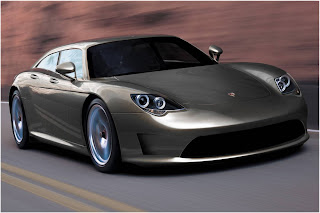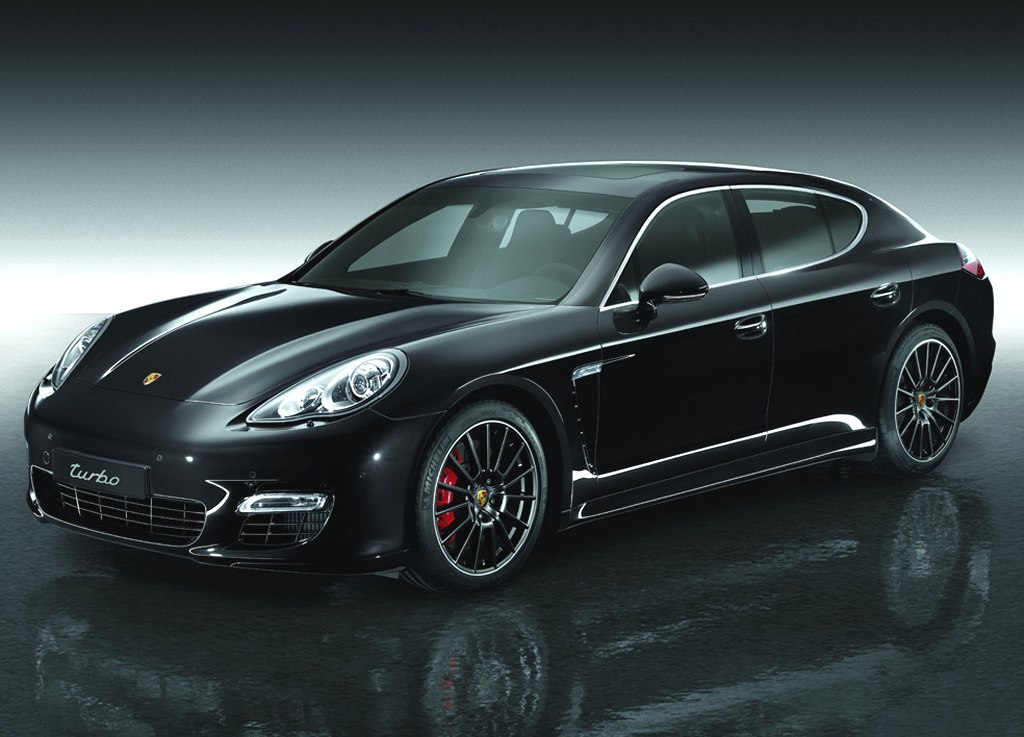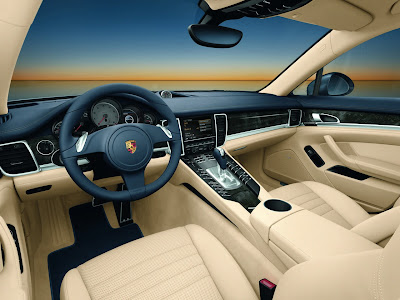 |
| 2013 Porsche Panamera GTS |
 |
| 2013 Porsche Panamera GTS |
 |
| 2013 Porsche Panamera GTS |
 |
| 2013 Porsche Panamera GTS |
Porsche's Panamera Turbo should be blushing a bright shade of Ruby Red Metallic. After all, the new 2013 Porsche Panamera GTS, which debuted at the 2011 Los Angeles auto show, is essentially a Panamera Turbo, albeit without any turbochargers.GTS is wanting for power. In stock form, the 400-hp, dual-overhead cam 4.8-liter V-8 found in the Panamera S and 4S is a silky-smooth engine that delivers an impressive 400 hp and 368 lb-ft of torque.
Apparently, there was room left for improvement. By tweaking the engine computer, revising valve springs, modifying cam lobes, and installing both a new twin-induction air intake and a sports exhaust system, Porsche's engineers have made the normally aspirated 4.8-liter both more powerful and happier to rev. In GTS guise, the horsepower inches forward from 400 to 430 hp, torque is increased to 383 lb-ft, and the redline creeps upward 400 rpm to 7100 rpm.
911 GTS, the Panamera GTS is awash in black accents. The rear diffuser, window trim, side air outlet panels, rear deck lid decorative trim, headlamp bezels, and washer covers are all painted black. The side sills are also coated in black paint, and even the exhaust tips are finished in a matte black finish.
In typical Porsche fashion, the Panamera GTS interior is trimmed from head to toe in copious amounts of leather and alcantara. Seat inserts, upper door panels, headliner, and center console armrest are all covered in the suede-like material, and the standard sport steering wheel can be wrapped to match upon request. 18-way power adjustable sport seats are standard, as are bespoke door sill guards, gauge faces, and embroidered headrests.
Pricing hasn't been revealed, but it's a safe bet the Panamera GTS will ring in somewhere between the Panamera 4S ($96,175, including destination) and the Turbo ($137,675). Though the notion of buying Turbo-like prowess on the cheap may woo some buyers, the GTS' appeal may be in how it offers greater performance without becoming an exercise in mechanical lunacy. It's something we've come to appreciate in other Porsche GTS models - particularly the 911 - and it's what we hope we can expect from the 2013 Panamera GTS.

































